
8
Analysis of Rainfall
Attenuation Using Oblate
Raindrops
8.1 INTRODUCTION
8.1.1 Rainfall Attenuation
Investigations on the attenuation caused by rain and other hydrometers and
their effects on terrestrial communications started as early as in the 1940s.
Subsequently, many theoretical and experimental results were obtained and
used to predict the effects of interaction between hydrometers and microwave
signals. The theories for the prediction of rain attenuation on microwave
signals are well established and widely used by many researchers. Concep-
tually, the specific attenuation due to raindrops depends on both the total
(extinction) cross section and the raindrop size distribution.
In 1908, Mie [161] f ormulated and put forth the exact formulation for the
calculation of the total cross section (TCS) of an isotropic, homogeneous di-
electric sphere of arbitrary size. This is known as A&e theory. Later, Stratton
[86] expanded the scattered fields into a series of spherical vector wave func-
tions to calculate the TCS from which the attenuation can readily be obtained
upon knowing the raindrop size distribution (DSD).
In the work by Oslen et al. [162], an empirical relationship between the
specific attenuation
A
and a rain rate
R
was proposed as
A = aRb,
where
a
= a(f) and b = b(f) are frequency-dependent parameters. Based on this
formulation, a and b can readily be obtained via regression analysis for dif-
ferent frequencies, a known drop size distribution and a given atmospheric
temperature. The International Radio Consultative Committee (CCIR) (now
known as CCITT) [163] recommended this relationship based on the Laws
227
Spheroidal Wave Functions in Electromagnetic Theory
Le-Wei Li, Xiao-Kang Kang, Mook-Seng Leong
Copyright 2002 John Wiley & Sons, Inc.
ISBNs: 0-471-03170-4 (Hardback); 0-471-22157-0 (Electronic)

228
ANALYSIS OF RAlNFALL ATTENUATlON USING OBLATE RAINDROPS
and Parsons DSD [164] in the frequency range 1 to 1000 GHz. Using interpo
lation, the unknowns a and b can be determined using the formula presented
in the report. However, the Laws and Parsons DSD is only a representa-
tive one. There are many other DSD models available in the literature, such
as the “Thunderstorm” distribution (J-T) by Joss et al., and the “Drizzle”
distribution (J-D) [ 1651.
However, these were generated from measurements taken in Europe, Canada,
the United States and Japan that underestimated the rainfall attenuation and
are unsuitable for a tropical climate such as that of Singapore. In fact, stud-
ies conducted [166] show that attenuation of microwave signals varies with
geographical locations, even at the same rain rate and frequency. Measure-
ments over the years have shown that the specific attenuation in Singapore
is much higher than that predicted by CCIR at various frequencies. Prom a
two-year measurement of rainfall attenuation for a 21.225-GHz signal, Yeo et
al. [167] generated a local DSD. Generation of a new DSD based on multiple
frequencies has been proposed, but has not yet been generated.
8.1.2 Raindrop Models in Different Sizes
The formulation for spherical raindrops is, however, valid for small sizes. The
earliest and best recognized contributions to theories in the prediction of rain
attenuation of distorted raindrops were probably made by Oguchi in 1960
[168] and 1964 [169], using the boundary-perturbation and point-matching
techniques. He calculated the TCS values of raindrops with small eccentric-
ity using vector wave functions and the first-order perturbation technique to
account for drop-shape deformations at large sizes. Using these calculations,
he predicted the attenuation for horizontally and vertically polarized waves
at 34.88 GHz. However, this method is accurate only for small raindrops
with small deformations. As raindrops increase in size, deformations increase
(eccentricity increases), leading to inaccuracies in the calculations. He refined
the method in 1963 using a second-order approximation to account for the
shape deformations of large raindrops.
Experimentally, photographic measurements of raindrops reviewed by Ogu-
chi in 1981 [170] h s owed increased deformations in raindrops as they increase
in size. A similar review of raindrop deformations was published in 1983 [171].
Raindrops vary in size from very small to fairly large. The smallest raindrops
may be equivalent to those found in clouds. The largest drops will not exceed
4 mm in radius, as otherwise they are hydrodynamically unstable and tend
to break up. Based on previous investigations, the smallest raindrop is 0.25
mm in radius and the largest is 3.25 mm in radius.
The shape of a water drop falling at terminal velocity may be determined
theoretically by solving a nonlinear equation describing the balance of internal
and external pressures at its surface. In real life, it is impossible to solve such
an equation analytically, due to the unknown aerodynamic pressure around
the surface, and such a solution is usually obtained numerically. A popular

INTRODUCTION
229
model for simulating shapes of raindrops was developed earlier by Pruppacher
and Pitter (the P-P model) [172]. B ase on this, the shape of raindrops of d
various sizes was determined theoretically by solving a nonlinear equation.
The calculations show that small raindrops are spherical in shape. As
they grow in size, they become spheroids and gradually become “Hamburger”
shaped (i.e., bottom flattened in the side view but caved-in in the cross-
sectional view). In reality, the shape of a raindrop is not determined only by
its size but is a complex function of other variables, such as wind direction
and air pressure.
In 1974, Morrison and Cross [58] computed the TCS of an oblate rain-
drop using a least squares fitting technique. They made modifications to the
method introduced by Oguchi, applying the perturbation method to a sphere
equal in volume to the raindrop and of suitable eccentricity.
Later, originating from the ellipsoidal scattering problem, further develop
ments were made by Asano and Yamamoto [24], who described the fields in
terms of spheroidal wave functions and solved the problem using the variable-
separation method and point-matching techniques. Alternatively, Holt et al.
[59] used an integral equation technique in his approach. Other methods were
considered by various researchers. Details as to the theories and applicability
of various methods of prediction of raindrop scattering and attenuation are
also available in the review papers by Oguchi [ 170,171].
As indicated by Oguchi and mentioned here earlier, it is almost impossible
to solve the nonlinear equation for the P-P model analytically. To simplify
calculations, a cosine series was utilized [ 1721. To further simplify the formu-
lation in applications, Li et al. [126] implemented a new model using different
expressions to describe the upper and lower portions of a realistically distorted
nonaxisymmetric raindrop. Based on this new model, a formula for calculation
of the TCS is desired. The formula contains terms representing zeroth-order
approximation (Mie scattering) and first-order approximation (sphere distor-
tion or perturbation theory), plus two additional analytical terms to account
for spheroid-based distortion of raindrops. This model provides a simple ana-
lytical expression. It is equivalent in simplicity to that of Oguchi’s first-order
perturbation methods in the calculation of total cross section, but produced
far more accurate results.
8.1.3 Oblate Spheroidal Raindrops
Raindrop size is a major factor that determines the shape of raindrops. For
small drop sizes, solutions of P-P nonlinear model shows that Mie theory can
be used to accurately determine the TCS due to its spherical shape. However,
as the raindrop size gets larger, distortions of the drop occur from a balance
of pressure inside and outside the drop. A major portion of this chapter is
to model plane-wave scattering by raindrops of various sizes in the spher-
oidal coordinate system by expanding fields inside and outside the raindrop
in spheroidal wave functions. Much work on EM scattering by spheroids has

230
ANALYSIS OF RAINFALL ATTENUATION USlNG OBLATE RAlNDROPS
been done in this area, with many different configurations explored. The for-
mulations presented in this chapter closely follow the work presented in [24],
implying our simplification to that of scattering by a single oblate raindrop.
8.2 PROBLEM FORMULATION
8.2.1 Geometry of the Problem
Consider the geometry where an incident plane EM wave is scattered by an
oblate spheroidal raindrop in a homogeneous, isotropic medium, as shown
in Fig. 8.1. The E field is in the plane of incidence in the case of vertical
polarization (TM) mode. The Ii field is in the plane of incidence in the case
of horizontal polarization (TE mode). It is no doubt that both E and H
fields inside and outside the raindrop satisfy Maxwell’s equations.
8.2.2 Definition of the EM Field
It is obvious that the EM fields here can be expressed in the same way -
as the spheroidal wave function expansions - as in previous chapters. In
this chapter we expand the incident, scattered, and transmitted EM fields
in terms of another type of oblate spheroidal wave vector, M(r) and N(r).
Their complete definitions in terms of spheroidal coordinates T are given in
Appendix A. Two cases of polarizations are considered, the TE mode and the
TM mode.
8.2.2.1
Case
1:
TE Mode
Incident field
Ei = 2 2 in [9,,(-ic,O)M~~~n(-ic,iF)
n=m m=O
(&la)
(&lb)
where M$zn ( -ic, is) and N$&( -ic, it) are presented in Appendix A (in
which the barameters c and c are replaced by -ic and it, respectively, for the

PROBLEM FORMULATlON
231
Fig. 8.1 Geometry of EM scattering by an oblate spheroidal raindrop.

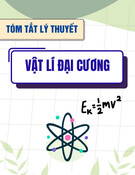

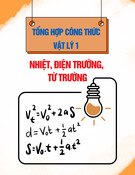




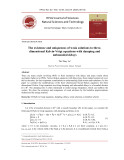
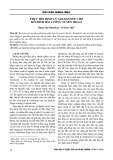
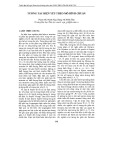








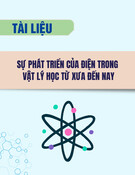
![Bộ câu hỏi lý thuyết Vật lý đại cương 2 [chuẩn nhất/mới nhất]](https://cdn.tailieu.vn/images/document/thumbnail/2025/20251003/kimphuong1001/135x160/74511759476041.jpg)
![Bài giảng Vật lý đại cương Chương 4 Học viện Kỹ thuật mật mã [Chuẩn SEO]](https://cdn.tailieu.vn/images/document/thumbnail/2025/20250925/kimphuong1001/135x160/46461758790667.jpg)




